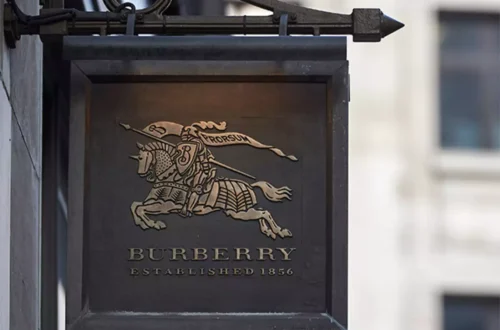In the fashion sector, ZARA, the Inditex Group’s main brand, has become a global sensation. ZARA, which is well-known for its fast-fashion business strategy and capacity to provide stylish, premium clothing at reasonable costs, has completely changed the way that people view fashion. This in-depth blog post explores ZARA’s product line, distinctive business strategy, and features that make it stand out from other clothing stores.
1. A Brief History of ZARA
Founded in 1974 by Amancio Ortega and Rosalía Mera in La Coruña, Spain, ZARA started as a small store offering affordable copies of high-end fashion designs. The brand’s mission was to bring the latest fashion trends to the mass market quickly and affordably. Over the years, ZARA has evolved into a global fashion powerhouse with a presence in over 90 countries and more than 2,000 stores worldwide.
The brand’s success is attributed to its innovative approach to fashion retailing, characterized by a fast-fashion model that emphasizes rapid turnover of inventory and a keen ability to respond to emerging trends.
2. ZARA’s Product Portfolio
ZARA’s extensive product portfolio encompasses a wide range of fashion items for men, women, and children. The brand’s offerings are divided into several key categories:
2.1. Women’s Fashion
ZARA’s women’s collection is diverse, encompassing everything from casual wear to formal attire. The product categories include:
- Tops and Blouses: ZARA offers a variety of tops, including shirts, blouses, and sweaters. These pieces often feature seasonal prints, fabrics, and cuts that align with current fashion trends.
- Dresses: From day dresses to evening gowns, ZARA’s dress collection includes options for various occasions. The designs range from minimalistic to bold, catering to a wide range of tastes.
- Outerwear: ZARA’s outerwear collection includes jackets, coats, and trench coats. The brand is known for its stylish and functional outerwear that transitions well between seasons.
- Bottoms: The range includes jeans, trousers, skirts, and shorts, available in various cuts, fabrics, and colors.
- Shoes and Accessories: ZARA’s footwear collection features everything from casual sneakers to elegant heels. Accessories include bags, scarves, and hats, designed to complement the clothing collections.
2.2. Men’s Fashion
ZARA’s men’s collection mirrors the brand’s commitment to providing trendy, high-quality apparel. Key product categories include:
- Shirts and T-Shirts: A wide range of casual and formal shirts, including dress shirts and graphic tees, featuring modern designs and fabrics.
- Suits and Blazers: ZARA offers tailored suits and blazers for various occasions, from business meetings to formal events.
- Outerwear: Men’s outerwear includes coats, jackets, and parkas, designed for both functionality and style.
- Bottoms: The collection features jeans, chinos, and trousers in various fits and styles.
- Shoes and Accessories: ZARA’s footwear range includes everything from loafers to boots. Accessories such as belts, bags, and hats complete the men’s collection.
2.3. Children’s Fashion
ZARA’s children’s collection caters to infants, toddlers, and older kids with stylish and practical clothing options. The categories include:
- Tops and Dresses: Comfortable and fashionable tops and dresses for children, designed with playful prints and durable fabrics.
- Outerwear: Jackets, coats, and vests for varying weather conditions.
- Bottoms: Jeans, leggings, and shorts designed for comfort and durability.
- Shoes and Accessories: Footwear and accessories tailored to children’s needs and styles.
2.4. Home Collection
In addition to fashion, ZARA Home offers a range of home decor products. The collection includes:
- Bedding and Linens: Stylish bedding sets, pillowcases, and table linens.
- Furniture: Elegant and functional furniture pieces that align with contemporary design trends.
- Decorative Items: Items such as candles, vases, and rugs that add a touch of sophistication to home interiors.
3. The ZARA Unique Approach
ZARA’s success can be attributed to several unique aspects of its business model and operations:
3.1. Fast-Fashion Model
ZARA is a pioneer in the fast-fashion industry, characterized by its ability to quickly design, produce, and distribute new clothing items. This rapid turnaround allows ZARA to introduce new styles to stores every two weeks, keeping the inventory fresh and aligned with current fashion trends.
Key Elements:
- Quick Response to Trends: ZARA’s design and production teams closely monitor fashion trends and customer feedback, allowing them to rapidly respond to changing preferences.
- Short Production Cycle: The brand’s efficient supply chain and manufacturing processes enable it to shorten the time between design and retail.
3.2. Vertical Integration
ZARA’s vertically integrated supply chain is a cornerstone of its business model. This approach allows the brand to control every aspect of its production process, from design and manufacturing to distribution.
Key Elements:
- In-House Manufacturing: ZARA’s in-house production facilities, primarily located in Europe, enable quick turnaround times and quality control.
- Centralized Distribution: The brand’s centralized distribution system ensures that stores receive new inventory swiftly and efficiently.
3.3. Data-Driven Design
ZARA leverages customer data and feedback to inform its design and production processes. By analyzing sales data and customer preferences, the brand can make informed decisions about which styles to continue and which to phase out.
Key Elements:
- Real-Time Feedback: Store managers provide real-time feedback on customer preferences, which is used to adjust inventory and design decisions.
- Sales Data Analysis: Data-driven insights help ZARA identify trends and predict future demand.
3.4. Store Experience
ZARA’s physical stores are designed to offer a sleek, minimalist shopping experience. The store layout and design are carefully curated to reflect the brand’s modern aesthetic and enhance the customer experience.
Key Elements:
- Visual Merchandising: ZARA’s visual merchandising strategy focuses on creating a clean, organized presentation of its products, making it easy for customers to navigate and find items.
- Store Locations: The brand strategically selects store locations in high-traffic areas, ensuring maximum visibility and accessibility.

4. ZARA’s Competitive Advantage
ZARA’s ability to maintain a competitive edge in the fashion industry can be attributed to several factors:
4.1. Agility and Flexibility
The brand’s fast-fashion model and vertical integration provide ZARA with unparalleled agility and flexibility. This allows the brand to quickly adapt to changing fashion trends and consumer preferences, setting it apart from competitors.
4.2. Quality and Affordability
ZARA offers high-quality garments at competitive prices, striking a balance between style and affordability. This combination appeals to a broad customer base, making it accessible to a wide range of consumers.
4.3. Innovation and Technology
ZARA continually invests in technology and innovation to enhance its operations and customer experience. This includes advancements in data analytics, supply chain management, and digital platforms.
4.4. Global Reach
With a presence in over 90 countries, ZARA has established a strong global footprint. Its international expansion strategy includes both standalone stores and partnerships with online retail platforms.
5. Sustainability and Ethical Practices
As the fashion industry faces increasing scrutiny over environmental and ethical issues, ZARA has made efforts to address these concerns through various sustainability initiatives.
5.1. Sustainable Collections
ZARA has introduced sustainable collections featuring eco-friendly materials such as organic cotton and recycled fabrics. The brand aims to reduce its environmental impact by incorporating these materials into its product lines.
5.2. Circular Economy
The brand is exploring circular economy practices, including initiatives to extend the life cycle of its products and reduce waste. This includes offering recycling programs and encouraging customers to return used clothing.
5.3. Ethical Sourcing
ZARA is committed to ethical sourcing practices, including ensuring fair labor conditions and responsible sourcing of materials. The brand works with suppliers to adhere to its code of conduct and ethical standards.
6. Future Outlook
ZARA’s future prospects are shaped by its ability to adapt to evolving consumer preferences, technological advancements, and sustainability challenges. Key areas to watch include:
6.1. Digital Transformation
ZARA is likely to continue investing in digital transformation, including enhancing its online shopping experience and leveraging technology for personalized customer interactions.
6.2. Sustainability Initiatives
The brand’s ongoing commitment to sustainability will play a crucial role in its future success. Continued efforts to reduce environmental impact and promote ethical practices will be essential in meeting consumer expectations and regulatory requirements.
6.3. Global Expansion
ZARA’s global expansion strategy will likely focus on penetrating new markets and strengthening its presence in existing regions. The brand’s ability to navigate diverse markets and adapt to local preferences will be key to its continued growth.

Conclusion
ZARA’s rise to prominence in the fashion industry is a testament to its innovative approach to fast fashion, vertical integration, and data-driven design. The brand’s extensive product portfolio, from stylish clothing for men, women, and children to elegant home decor items, reflects its commitment to providing high-quality, trend-focused products at accessible prices.
While ZARA continues to face challenges related to sustainability and ethical practices, its ongoing efforts to address these issues demonstrate its dedication to evolving with the industry. As ZARA navigates the future, its ability to balance agility, quality, and sustainability will be critical to maintaining its position as a leading global fashion retailer. Glam-Garb’s






